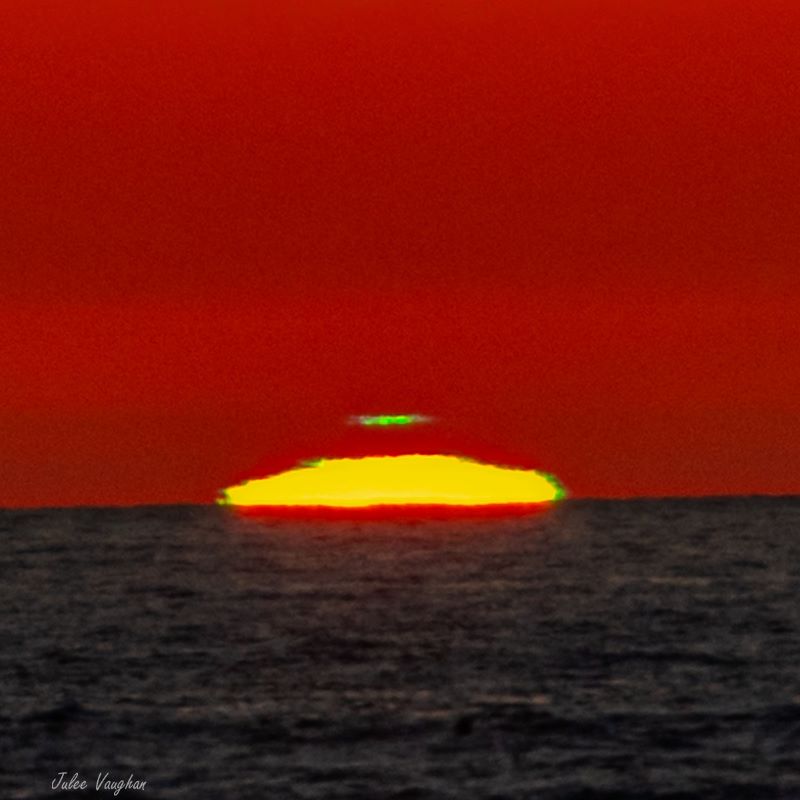
What is a green flash?
People say that when you go to the beach to look at the sunset, you can try to see a green flash. But what is it? The green flash is an optical phenomenon that you can see shortly after sunset or before sunrise. It happens when the sun is almost entirely below the horizon, with the upper edge still visible. For a second or two, that upper rim of the sun will appear green in color, sometimes blue. It’s a brief flash of the color green, and quite exciting to see, especially if you’ve been looking for one!
Green flashes do play a role in some legends. It’s said that once you’ve seen a green flash, you’ll never again go wrong in matters of the heart.
The 2024 lunar calendars are here! Best Christmas gifts in the universe! Check ’em out here.
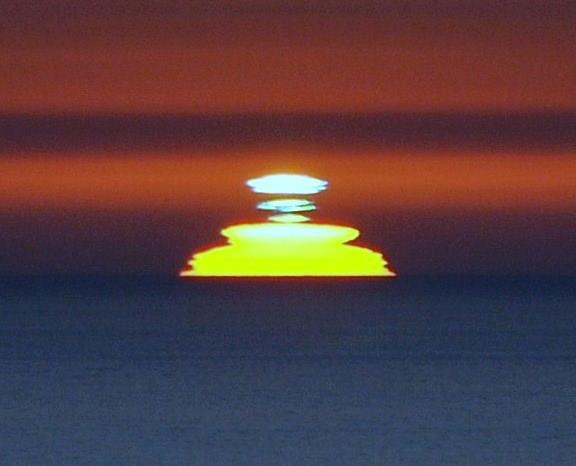
How can you see one?
You just need two things to see a green flash:
1. A clear day with no haze or clouds on the horizon.
2. A distant horizon, and a distinct edge to the horizon. You can see the green flash from a mountaintop or high building. But most often people on the beach or in boats see them over the ocean.
Important tip: Don’t look at the sun until it is nearly entirely below the horizon. If you do, you will dazzle (or damage) your eyes and ruin your green flash chances for that day.
Because you need to know exactly where to look along the horizon, and because most of us aren’t up before dawn, green flashes are most often seen after sunset. But diligent observers can see them before dawn, too. And it’s possible to see green flashes over land, too, if your horizon is far enough away.
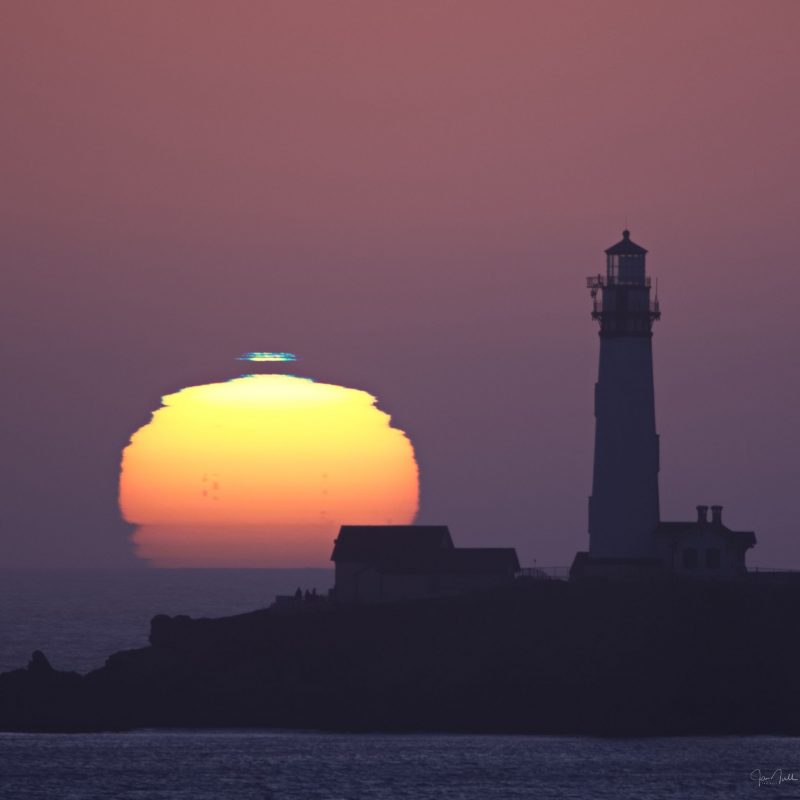
What makes a green flash?
According to Atmospheric Optics:
Inferior mirages are produced by warm air at the ocean or earth’s surface and an air temperature gradient changing rapidly with height. Rays from a low sun are refracted back upward as they pass between the cool and warm layers. Refraction always tends to deflect rays toward the denser layer. An observer above the layer sees two solar images or parts of them (1) an erect image from rays that pass relatively undeflected above the warm layer and (2) a lower inverted image from rays mirrored upward by the warm layer. Each sun image is as ‘real’ as the other. The effect is not dissimilar to the mirage seen above a hot road surface.
As the sunset proceeds, the upper and lower images approach, touch and eventually overlap to form an ‘omega’ shaped sun.
A green flash occurs because at a later stage the deflection by the warm layer/cooler air boundary becomes very sensitive to the angle of incidence of the sun’s rays. Small deviations are vertically magnified including the difference in deflection between red and green rays. This amplification provides the separation between green and red that refraction through a normal atmosphere cannot accomplish.
What is the green ray?
The flash can be like a flame that shoots above the horizon. In that case, it’s called a green ray. I’ve seen lots of green flashes, but never a green ray, although I was once walking on a beach in Mexico and turned away just as my companion saw one.
I did not find any photos of flamelike green rays (if you know of one, let me know), but the photo below suggests the beginnings of a ray.
Enjoying EarthSky? Sign up for our free daily newsletter today!
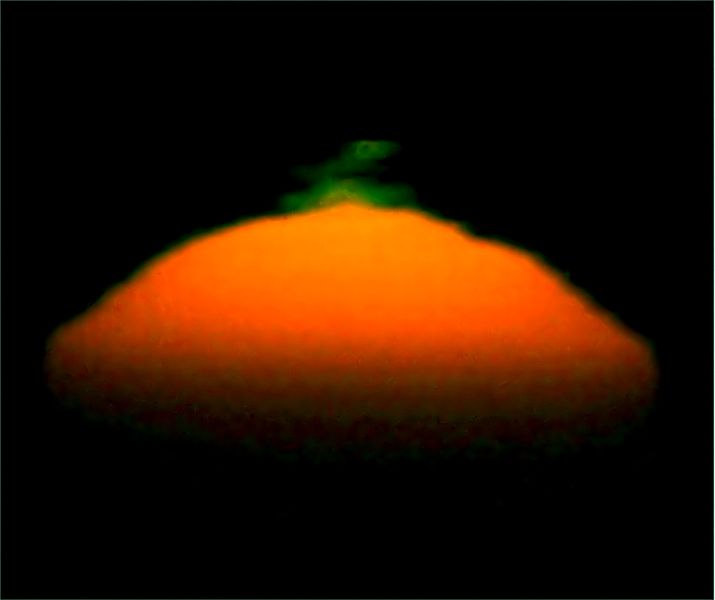
Green flash photos from the EarthSky community
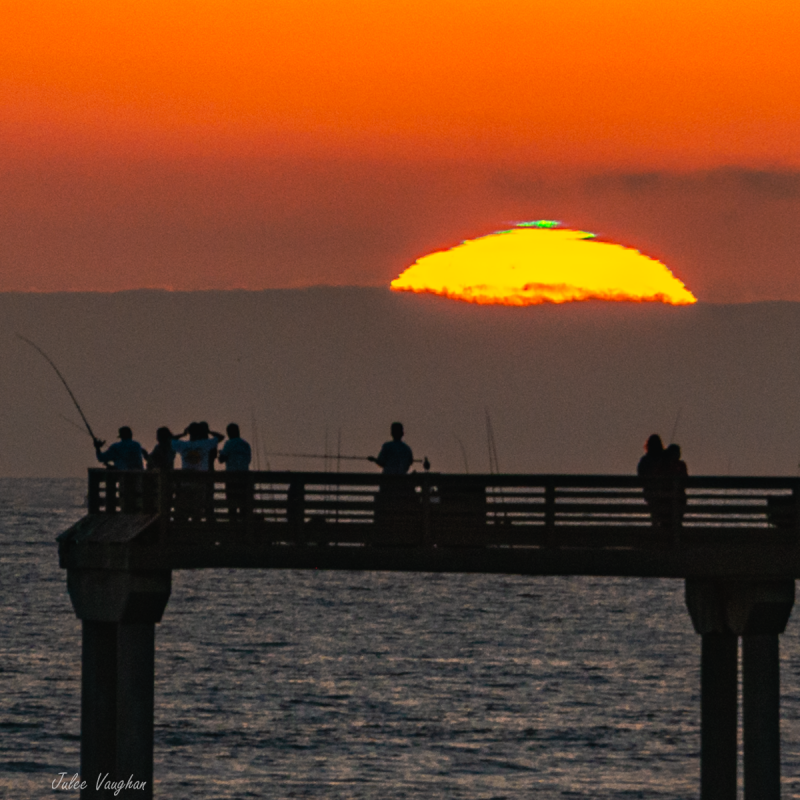

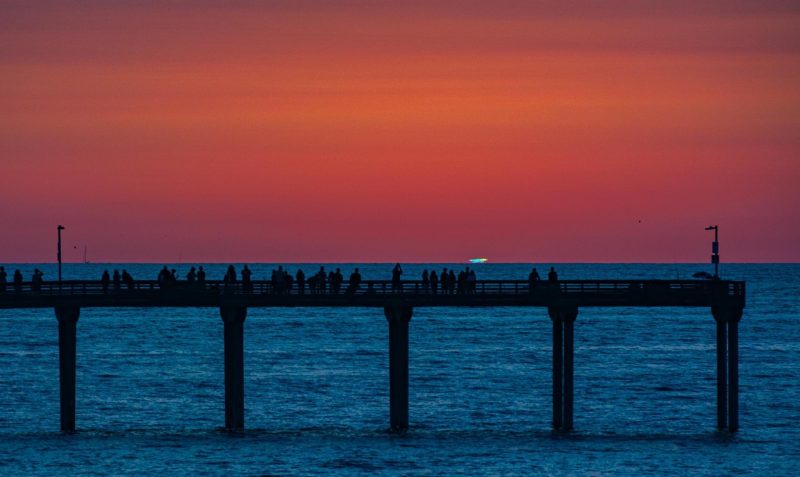
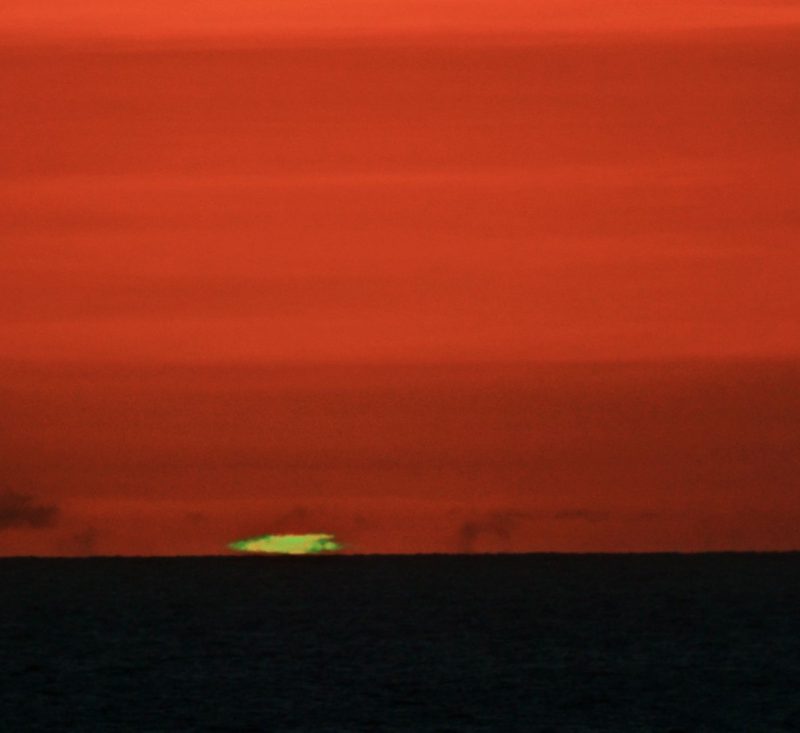
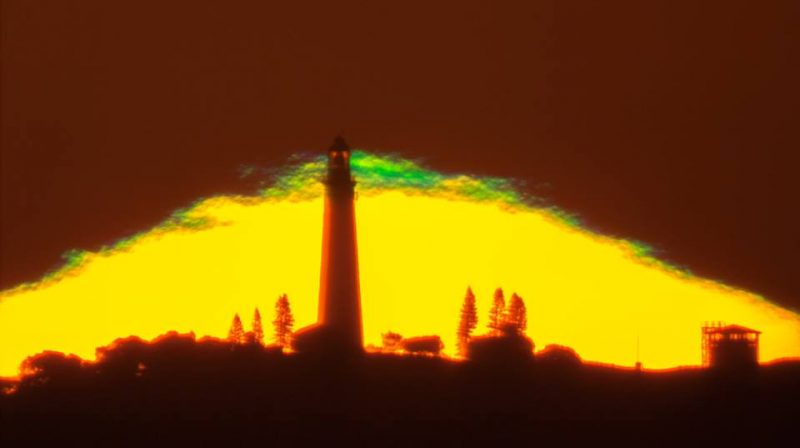
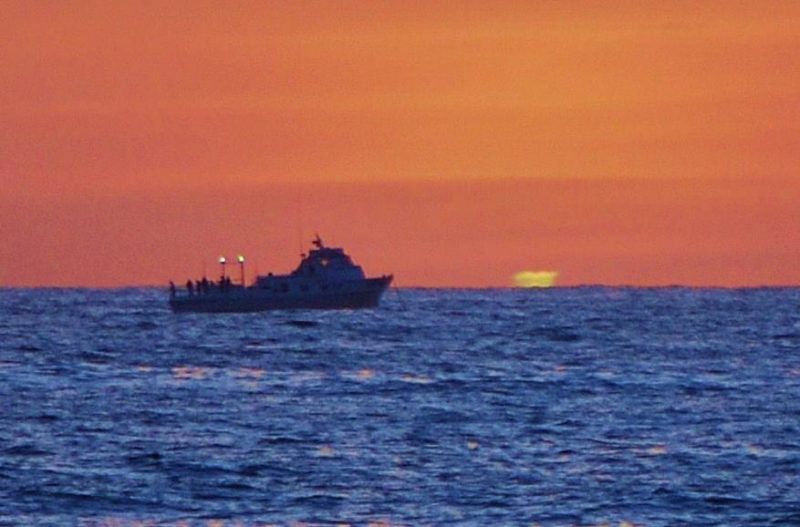
More great green flash photos
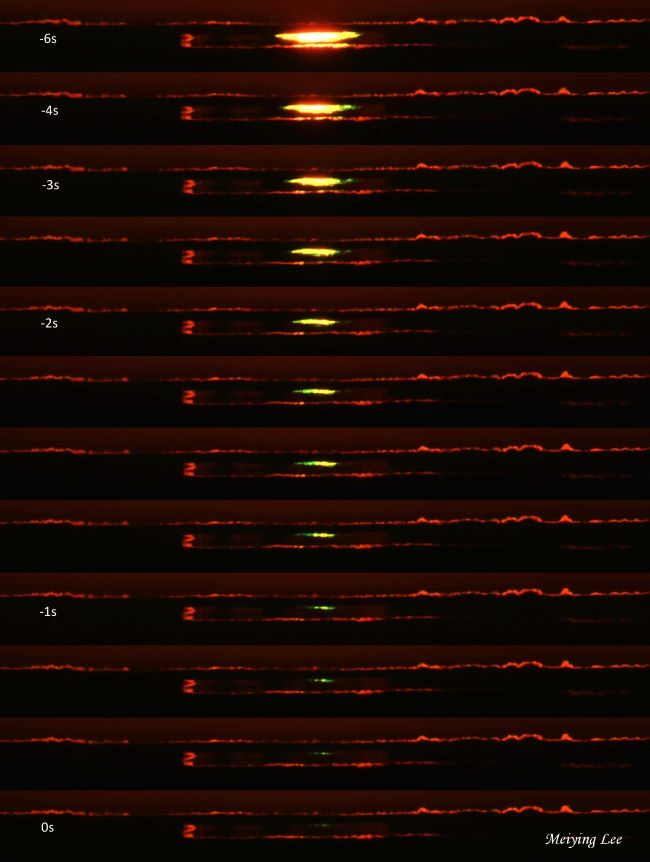

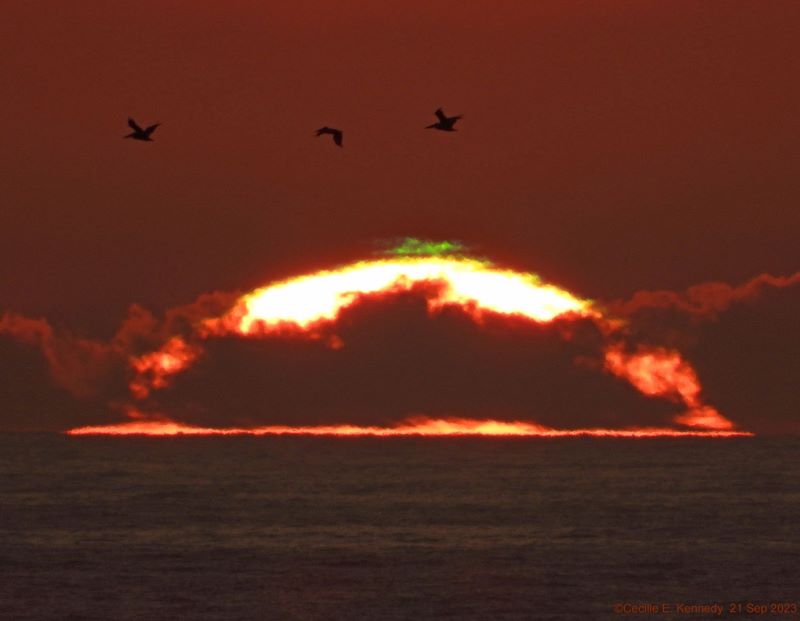
Bottom line: Learn what a green flash is and how to see one here. Plus, enjoy great photos!
The post What’s a green flash and how can I see one? first appeared on EarthSky.
from EarthSky https://ift.tt/QSs0XNn

What is a green flash?
People say that when you go to the beach to look at the sunset, you can try to see a green flash. But what is it? The green flash is an optical phenomenon that you can see shortly after sunset or before sunrise. It happens when the sun is almost entirely below the horizon, with the upper edge still visible. For a second or two, that upper rim of the sun will appear green in color, sometimes blue. It’s a brief flash of the color green, and quite exciting to see, especially if you’ve been looking for one!
Green flashes do play a role in some legends. It’s said that once you’ve seen a green flash, you’ll never again go wrong in matters of the heart.
The 2024 lunar calendars are here! Best Christmas gifts in the universe! Check ’em out here.

How can you see one?
You just need two things to see a green flash:
1. A clear day with no haze or clouds on the horizon.
2. A distant horizon, and a distinct edge to the horizon. You can see the green flash from a mountaintop or high building. But most often people on the beach or in boats see them over the ocean.
Important tip: Don’t look at the sun until it is nearly entirely below the horizon. If you do, you will dazzle (or damage) your eyes and ruin your green flash chances for that day.
Because you need to know exactly where to look along the horizon, and because most of us aren’t up before dawn, green flashes are most often seen after sunset. But diligent observers can see them before dawn, too. And it’s possible to see green flashes over land, too, if your horizon is far enough away.

What makes a green flash?
According to Atmospheric Optics:
Inferior mirages are produced by warm air at the ocean or earth’s surface and an air temperature gradient changing rapidly with height. Rays from a low sun are refracted back upward as they pass between the cool and warm layers. Refraction always tends to deflect rays toward the denser layer. An observer above the layer sees two solar images or parts of them (1) an erect image from rays that pass relatively undeflected above the warm layer and (2) a lower inverted image from rays mirrored upward by the warm layer. Each sun image is as ‘real’ as the other. The effect is not dissimilar to the mirage seen above a hot road surface.
As the sunset proceeds, the upper and lower images approach, touch and eventually overlap to form an ‘omega’ shaped sun.
A green flash occurs because at a later stage the deflection by the warm layer/cooler air boundary becomes very sensitive to the angle of incidence of the sun’s rays. Small deviations are vertically magnified including the difference in deflection between red and green rays. This amplification provides the separation between green and red that refraction through a normal atmosphere cannot accomplish.
What is the green ray?
The flash can be like a flame that shoots above the horizon. In that case, it’s called a green ray. I’ve seen lots of green flashes, but never a green ray, although I was once walking on a beach in Mexico and turned away just as my companion saw one.
I did not find any photos of flamelike green rays (if you know of one, let me know), but the photo below suggests the beginnings of a ray.
Enjoying EarthSky? Sign up for our free daily newsletter today!

Green flash photos from the EarthSky community






More great green flash photos



Bottom line: Learn what a green flash is and how to see one here. Plus, enjoy great photos!
The post What’s a green flash and how can I see one? first appeared on EarthSky.
from EarthSky https://ift.tt/QSs0XNn

Aucun commentaire:
Enregistrer un commentaire